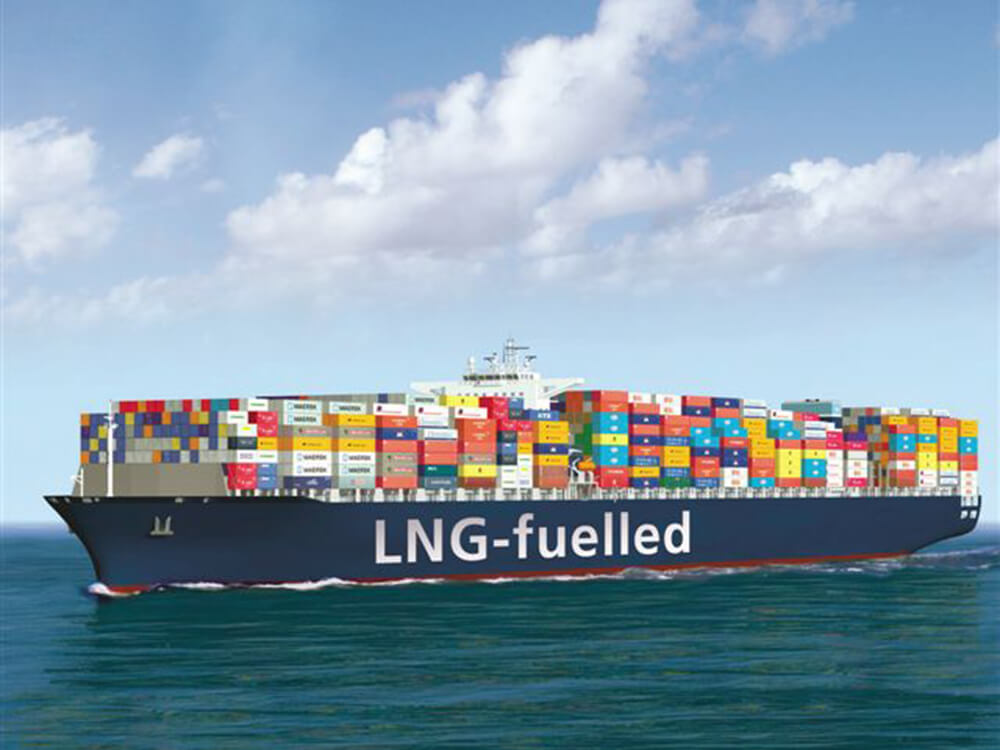Infrastructure and LNG as Fuel for Ships

The need to secure fuel for the various means of transport is growing at an increasing pace driven by the continuous need of people to move about, the continuing growth in the world’s population and the limited global reserves of oil, taking into account what the International Energy Agency (IEA) indicated that almost 50% of oil is used to meet the needs of means of transport, and its observation of the increase in the contribution of alternative fuels to the global energy mix and the requirements of the transport sector, which will make the trend gradually grow in the coming years towards the use of liquefied natural gas (LNG), especially for ships and maritime transport activities, being one of the oldest and largest industries in the world, which controls more than 85% of the global transport and shipping requirements. This is not limited to ships, but also applies to the infrastructure necessary for the operation of those ships, which is regarded as necessary for the continued growth of the use of gas as fuel.
There are many operational benefits and economic returns for ship-owners by the use of LNG, such as the reduction of operational costs in terms of the cost of refueling and maintenance, as well as the implementation of various environmental requirements to comply with all current and future emission standards. On the other hand, the limited facilities and mechanisms for the supply of natural gas to ships at global ports, the high cost of the engines and gas injection systems, the size of the tanks required for the process and the limited space currently available on ships, which implies the loss by ships – especially commercial ships and tankers - of part of their shipping capacity in order to make room for the installation of liquefied natural gas tanks, are deemed to be challenges that will impede the development of its use. This is in addition to the lack of a clear and well-known cost for supplying ships with liquefied natural gas, as this largely depends on the site and the available infrastructure.
If we look at the mechanisms that are currently available and are being used to supply ships and ferries with natural gas, we find that this is often done by using specialized trucks, in a process very similar to the process of aviation refueling through a trailer fitted with a tank of jet fuel, which means limiting the capacity for refueling ships to the storage capacity of those trucks, which are usually of sizes that ranges between 50 to 80 cubic meters, making them suitable for supplying ships of small sizes only; or by fixed pipelines and facilities supplying natural gas, which requires dedicated storage facilities and piers at the ports for this process which largely are not currently found. This is in addition to supply by means of sea barges and ships dedicated to supplying ships with fuel.
Many ports around the world, especially European ones, are looking to develop these capabilities in the near future. A number of countries have invested in developing facilities for the supply of natural gas within their efforts to support the plans of the European Union for the activation of the role of liquefied natural gas in the Strategy for Transport for 2020. Some of the infrastructure has been developed and specialized facilities to supply ships with natural gas have been established in the largest two ports in Europe, which are the Port of Rotterdam in the Netherlands and the port of Antwerp in Belgium, whether through government or private sector entities. Singapore ports have also awarded the alliance between KS Investments and the BG Group the concessionary right for the supply of natural gas through refueling ships (LNG bunkering).
Despite the fact that the feasibility of switching to clean energy or LNG has not yet been proven from an economical angle in respect of shipping companies, the challenge of the lack of appropriate infrastructure to supply ships with liquefied natural gas at the various ports in the world will remain as an obstacle to its future growth. In order to achieve this, decision-makers will have to consider all the direct and indirect factors affecting its development, and various countries are looking to the use of liquefied natural gas by the year 2020, both in Asia and Europe, the majority of whom have the ability to provide the technical capabilities to achieve this. The challenge that remains ahead is overcoming the feasibility of its application in the light of the huge amounts required to provide this infrastructure in these countries on the one hand, and the high cost to apply them to ships on the other hand and to put in place the appropriate finance mechanisms that would make the process practically and economically feasible.
